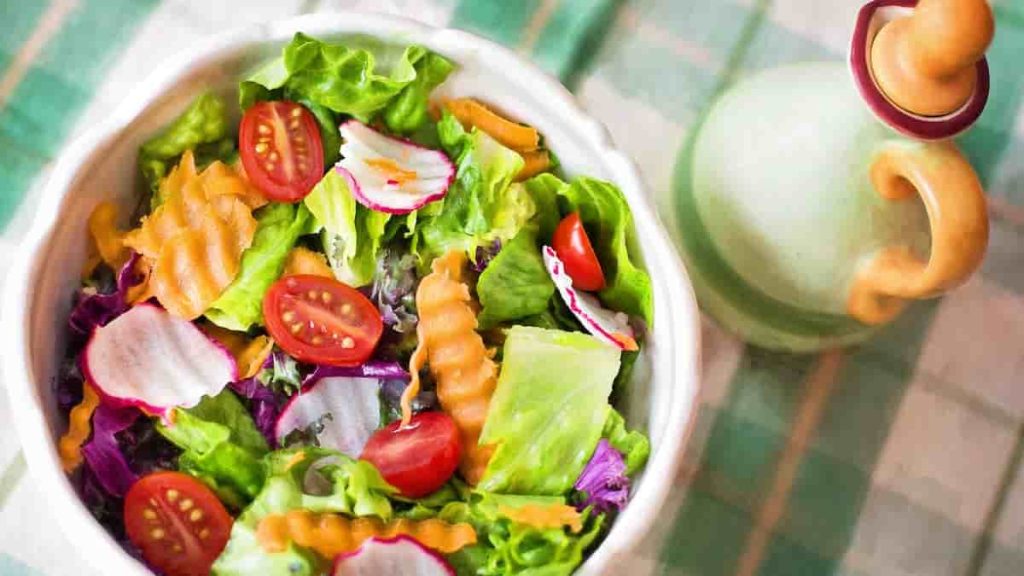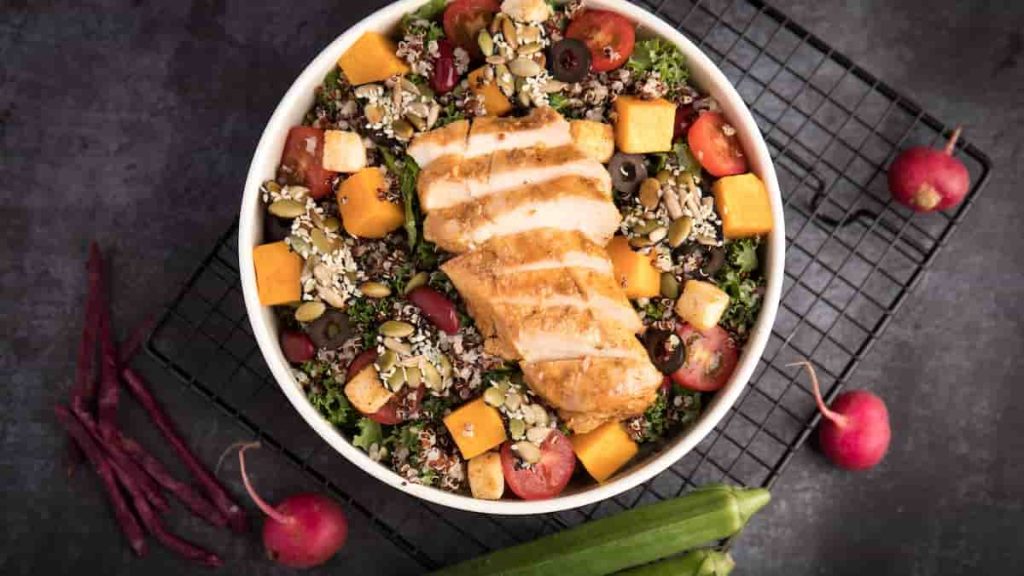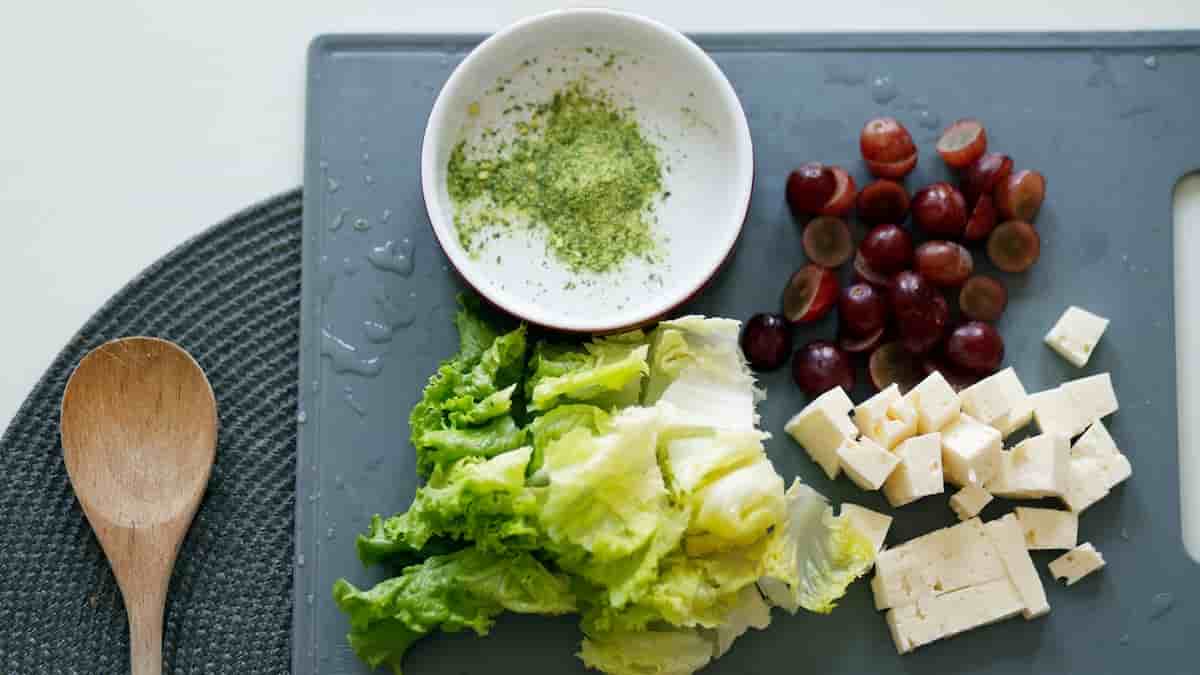Here is your complete guide to cycling carbs meal plan.
Introduction to Cycling Carbs Meal Plan
Incorporating a well-designed cycling carbs meal plan into your athletic routine can be a game-changer. Whether you’re a professional athlete, a weekend warrior, or simply aiming to improve your fitness levels, understanding how to strategically cycle carbohydrates can optimize your performance and support your goals. In this article, we’ll delve into the intricacies of a cycling carbs meal plan, explore its benefits, and provide you with a comprehensive guide to create your own plan. Here is your complete and ultimate guide about the cycling carbs meal plan.
Understanding Carbohydrates
Carbohydrates are the body’s primary source of energy, making them a crucial component of any athlete’s diet. They are classified into three main types:
- Simple Carbohydrates: These include sugars found in fruits, honey, and processed foods.
- Complex Carbohydrates: Examples of complex carbs are whole grains, legumes, and starchy vegetables.
- Dietary Fiber: Fiber is found in plant-based foods like fruits, vegetables, and whole grains, aiding digestion and promoting satiety.
Glycemic Index measures how carbohydrates affect blood sugar levels. Foods with a high glycemic index are quickly digested, leading to a rapid rise in blood sugar, while those with a low glycemic index are digested more slowly, resulting in a gradual release of glucose.
Basics of Cycling Carbs: Cycling Carbs Meal Plan
Cycling carbs refers to the practice of strategically varying your carbohydrate intake to optimize energy utilization and enhance performance. This method involves alternating between phases of high, moderate, and low carbohydrate consumption. Each phase serves a specific purpose:
- High-Carb Phase: During this phase, you increase your carbohydrate intake to replenish glycogen stores and provide ample fuel for intense training sessions or competitions.
- Moderate-Carb Phase: This phase involves maintaining a moderate carbohydrate intake to support daily activities and training sessions of moderate intensity.
- Low-Carb Phase: In this phase, you reduce your carbohydrate intake to promote fat burning and improve metabolic flexibility.
What Does the Science Say About Carb Cycling?
Carb cycling has gained popularity in the fitness and athletic community, but what does the scientific research reveal about its effectiveness? Let’s explore the topic in detail.
Understanding the Research
Numerous studies have investigated the impact of carb cycling on athletic performance, body composition, and metabolic health. While more research is needed, the existing evidence provides valuable insights.
Performance Enhancement
Research suggests that strategically timing carbohydrate intake can enhance performance during high-intensity activities. By increasing carbohydrate consumption before and during intense workouts or competitions, athletes can replenish glycogen stores, delay fatigue, and optimize energy utilization.
Metabolic Flexibility: Cycling Carbs Meal Plan
Carb cycling can also promote metabolic flexibility, the ability to efficiently switch between using carbohydrates and fats as fuel sources. This adaptability allows athletes to sustain energy levels during long-duration activities and potentially enhance fat burning during low-carb phases.
Body Composition and Weight Management
Carb cycling may be a useful tool for body composition and weight management. By cycling between higher and lower carb phases, individuals can support muscle building and recovery during high-carb periods, while promoting fat burning during low-carb phases. This approach may aid in maintaining or reducing body fat levels while preserving lean muscle mass.
Insulin Sensitivity and Blood Sugar Regulation: Cycling Carbs Meal Plan
Some studies suggest that carb cycling, specifically incorporating low-carb phases, can improve insulin sensitivity and blood sugar regulation. By reducing carbohydrate intake during certain periods, individuals may experience more stable blood sugar levels and enhanced insulin sensitivity, which can have positive implications for overall metabolic health.
Individual Variability and Personalization: Cycling Carbs Meal Plan
It’s important to note that individual responses to carb cycling may vary. Factors such as genetics, training status, and specific goals can influence how an individual’s body responds to different carb cycling protocols. Personalization is key when implementing a carb cycling approach to ensure it aligns with individual needs and preferences.

Creating a Cycling Carbs Meal Plan
Designing an effective cycling carbs meal plan requires careful consideration of individual needs, activity levels, and goals. Here’s a step-by-step guide to help you create your personalized plan:
- Determine Your Carb Needs: Assess your energy requirements based on your activity level, training intensity, and body composition goals. Consult with a sports nutritionist or registered dietitian if needed.
- Establish Your Phases: Decide on the duration of each phase (high, moderate, low) based on your training schedule and individual preferences.
- Plan Your Meals: Distribute your carbohydrate intake throughout the day, aligning it with your training sessions and energy demands. Aim for a balance of complex carbs, lean proteins, and healthy fats.
- Food Choices: Select nutrient-dense carbohydrate sources such as whole grains, fruits, vegetables, and legumes. Prioritize foods with a low glycemic index during the moderate and low-carb phases.
- Meal Prep and Portion Control: Prepare your meals in advance to ensure convenience and adherence to your plan. Use portion control techniques to manage your calorie intake effectively.
Example of a Cycling Carbs Meal Plan
| Meal | High-Carb Phase | Moderate-Carb Phase | Low-Carb Phase |
|---|---|---|---|
| Breakfast | Oatmeal with berries and nuts | Greek yogurt with fruits | Scrambled eggs with vegetables |
| Snack | Banana and almond butter | Carrot sticks with hummus | Celery and peanut butter |
| Lunch | Whole grain pasta with chicken | Quinoa salad with grilled tofu | Grilled chicken salad |
| Snack | Energy bar | Mixed nuts and seeds | Hard-boiled eggs |
| Dinner | Sweet potato and salmon | Brown rice and grilled fish | Grilled steak with vegetables |
| Pre-workout | Fruit smoothie with protein powder | Rice cake with nut butter | Hard-boiled eggs |
| Post-workout | Chocolate milk | Protein shake | Greek yogurt with berries |
| Before Bed | Whole grain toast with avocado | Cottage cheese with berries | Mixed greens with olive oil |
Benefits of Cycling Carbs: Cycling Carbs Meal Plan
Adopting a cycling carbs meal plan can offer a myriad of benefits for athletes and fitness enthusiasts alike:
- Enhanced Performance: Properly timed and varied carbohydrate intake ensures optimal glycogen stores, maximizing energy availability during workouts or competitions.
- Improved Endurance: By training the body to utilize both carbohydrates and fats as fuel sources, cycling carbs enhances endurance capabilities.
- Weight Management: Cycling carbs promotes fat burning during low-carb phases and supports muscle building and recovery during high-carb phases, aiding in weight management.
- Stable Blood Sugar: Consuming carbohydrates with a low glycemic index helps regulate blood sugar levels, providing sustained energy and reducing the risk of energy crashes.
- Flexible and Sustainable Approach: Cycling carbs allows for flexibility in food choices, making it easier to adhere to the plan long-term.
Benefits of Cycling Carbs
| Benefit | Explanation |
|---|---|
| Enhanced Performance | Maximizes glycogen stores, optimizing energy availability for intense training or competitions. |
| Improved Endurance | Trains the body to efficiently utilize carbohydrates and fats as fuel sources, enhancing endurance. |
| Weight Management | Promotes fat burning during low-carb phases and supports muscle building and recovery during high-carb phases. |
| Stable Blood Sugar | Consuming low glycemic index carbs regulates blood sugar levels, providing sustained energy and preventing crashes. |
| Flexible and Sustainable | Allows for food variety and long-term adherence to the plan. |
Potential Challenges and Tips
While cycling carbs can be highly beneficial, it may come with some challenges. Here are a few common obstacles and tips to overcome them:
- Cravings: During low-carb phases, you may experience cravings for carbohydrates. Opt for healthy alternatives like low-carb vegetables or increase your healthy fat intake to curb cravings.
- Individual Variability: Experimentation is key. Pay attention to how your body responds to different phases and adjust your plan accordingly to find what works best for you.
- Digestive Issues: Rapid changes in carbohydrate intake can cause digestive discomfort. Gradually transition between phases to allow your body to adapt.
- Lack of Planning: Failing to plan meals in advance can lead to poor food choices. Plan your meals and snacks ahead of time to ensure adherence to your cycling carbs meal plan.
Overcoming Common Challenges
| Challenge | Tips |
|---|---|
| Cravings | Opt for healthy alternatives or increase healthy fat intake to curb cravings. |
| Individual Variability | Experiment and adjust your plan based on how your body responds. |
| Digestive Issues | Gradually transition between phases to allow your body to adapt. |
| Lack of Planning | Plan your meals and snacks ahead of time to ensure adherence to your cycling carbs meal plan. |
Is Carb Cycling Ketogenic?
Carb cycling and the ketogenic diet are two different dietary approaches, although they both involve manipulating carbohydrate intake. While there may be some overlap in terms of reducing carb intake during certain periods, they are not the same.
Carb Cycling: Cycling Carbs Meal Plan
Carb cycling involves alternating between high-carb, moderate-carb, and low-carb phases throughout the week or training cycle. The goal is to strategically time carbohydrate intake to optimize energy levels, performance, and body composition. During high-carb phases, individuals consume more carbohydrates to replenish glycogen stores and support intense physical activity. In contrast, low-carb phases restrict carbohydrate intake to promote fat burning and metabolic flexibility.
Ketogenic Diet: Cycling Carbs Meal Plan
The ketogenic diet, on the other hand, is a low-carbohydrate, high-fat diet that aims to induce a state of ketosis. In this state, the body primarily uses ketones, produced from fat breakdown, as its primary fuel source instead of glucose. The diet typically restricts carbohydrate intake to a very low level, usually below 50 grams per day, and emphasizes high-fat foods such as avocados, nuts, oils, and fatty cuts of meat.

Differences Between Carb Cycling and Ketogenic Diet
The key difference between carb cycling and the ketogenic diet lies in the overall macronutrient composition and the primary goal of each approach.
- Macronutrient Composition: Carb cycling involves varying carbohydrate intake while maintaining a balance of other macronutrients, including protein and fat. The ketogenic diet, however, emphasizes high fat intake and severely restricts carbohydrates.
- Primary Goal: Carb cycling aims to optimize energy availability, performance, and body composition by strategically timing carbohydrate intake. The ketogenic diet aims to shift the body’s primary fuel source from carbohydrates to fat by inducing a state of ketosis.
- Flexibility: Carb cycling offers flexibility in food choices and macronutrient ratios, allowing for individual preferences and varied nutrient intake. The ketogenic diet has stricter guidelines, requiring individuals to closely monitor and restrict carbohydrate intake to maintain ketosis.
While carb cycling and the ketogenic diet both involve manipulating carbohydrate intake, they are distinct approaches with different goals and macronutrient compositions. Carb cycling is more flexible and focuses on optimizing performance and body composition through strategic carbohydrate timing. The ketogenic diet aims to shift the body into ketosis by severely restricting carbohydrate intake and emphasizing high fat consumption.
It’s important to note that both approaches have potential benefits and considerations. Choosing the most suitable dietary approach depends on individual goals, preferences, and overall health. Consulting with a registered dietitian or healthcare professional can provide personalized guidance to determine which approach aligns best with your needs and goals.
7-Day Cycling Carbs Meal Plan
A well-structured and balanced 7-day carb-cycling meal plan can help optimize energy levels, support physical activity, and promote body composition goals. Here’s a detailed breakdown of a 7-day carb-cycling meal plan to provide guidance and inspiration for your nutritional needs.
Day 1: High-Carb Phase
Breakfast: Start the day with a nutritious meal. Enjoy a bowl of oatmeal topped with fresh berries and a side of Greek yogurt for protein. Lunch: Opt for grilled chicken breast, a serving of quinoa, and a generous portion of roasted vegetables for a satisfying midday meal. Snack: Keep your energy levels up with apple slices paired with almond butter for a balance of carbohydrates and healthy fats. Dinner: Choose baked salmon as the main protein source, accompanied by a side of sweet potato and steamed broccoli for a well-rounded dinner.
Day 2: Moderate-Carb Phase
Breakfast: Prepare a spinach and mushroom omelet served with whole grain toast for a nutritious and balanced breakfast. Lunch: Enjoy a turkey wrap using a whole wheat tortilla, mixed greens, and sliced avocado for a filling and wholesome lunch option. Snack: Greek yogurt with mixed nuts provides a protein-rich and satisfying snack to keep you fueled throughout the day. Dinner: For dinner, savor grilled shrimp alongside a serving of brown rice and stir-fried vegetables to maintain the moderate-carb phase.
Day 3: Low-Carb Phase
Breakfast: Start your day with a vegetable omelet enriched with feta cheese for a low-carb and protein-packed breakfast. Lunch: Opt for a refreshing salad comprising mixed greens, grilled chicken, cucumbers, and a drizzle of olive oil dressing. Snack: Enjoy a light snack of celery sticks paired with hummus to keep your hunger at bay. Dinner: Indulge in a satisfying dinner featuring grilled steak, cauliflower rice, and sautéed spinach for a low-carb, nutrient-dense meal.
Day 4: Repeat High-Carb Phase
Repeat the meal plan from Day 1, following the high-carb phase, to ensure proper glycogen replenishment and sustained energy levels.
Day 5: Repeat Moderate-Carb Phase

Repeat the meal plan from Day 2, following the moderate-carb phase, to strike a balance between energy availability and fat utilization.
Day 6: Repeat Low-Carb Phase
Repeat the meal plan from Day 3, following the low-carb phase, to promote fat burning and metabolic flexibility.
Day 7: High-Carb Refeed Day
Breakfast: Enjoy a breakfast consisting of whole grain pancakes topped with sliced bananas and a drizzle of honey for a delicious start to the day. Lunch: Opt for a quinoa salad loaded with grilled vegetables and chickpeas to provide a variety of nutrients and complex carbohydrates. Snack: Replenish your energy with a protein smoothie using mixed berries to support muscle recovery and satisfy your sweet tooth. Dinner: Conclude the week with a baked chicken thigh, roasted sweet potatoes, and steamed broccoli to maintain a balanced high-carb refeed day.
Remember to adjust portion sizes and total calorie intake according to your specific goals and individual needs. This 7-day carb-cycling meal plan offers a foundation for creating a personalized and sustainable approach to meet your nutritional requirements while cycling carbohydrates strategically.
By following this well-structured and varied meal plan, you can experience the benefits of carb cycling, optimize your energy levels, and work towards your desired body composition goals.
7-Day Cycling Carbs Meal Plan
Here’s a 7-day sample meal plan for a cycling carbs meal plan:
Day 1: High-Carb Day
- Breakfast: Oatmeal topped with sliced bananas and a drizzle of honey.
- Snack: Greek yogurt with mixed berries.
- Lunch: Grilled chicken breast with quinoa and roasted vegetables.
- Snack: Apple slices with almond butter.
- Dinner: Baked salmon with sweet potato and steamed broccoli.
Day 2: Low-Carb Day
- Breakfast: Vegetable omelet with spinach, mushrooms, and feta cheese.
- Snack: Celery sticks with hummus.
- Lunch: Turkey lettuce wrap with avocado and mixed greens.
- Snack: Hard-boiled eggs.
- Dinner: Grilled steak with cauliflower rice and sautéed spinach.
The Day 3: Moderate-Carb Day
- Breakfast: Whole grain toast topped with avocado and scrambled eggs.
- Snack: Protein shake with almond milk.
- Lunch: Shrimp salad with mixed greens, tomatoes, and balsamic vinaigrette.
- Snack: Carrot sticks with hummus.
- Dinner: Grilled tofu with zucchini noodles and marinara sauce.
Day 4: High-Carb Day
- Breakfast: Whole grain pancakes with fresh berries and Greek yogurt.
- Snack: Protein bar.
- Lunch: Quinoa and black bean salad with mixed greens.
- Snack: Protein smoothie with mixed berries.
- Dinner: Grilled chicken breast with brown rice and steamed broccoli.
Day 5: Low-Carb Day
- Breakfast: Veggie scramble with bell peppers, onions, and eggs.
- Snack: Cottage cheese with cucumber slices.
- Lunch: Chicken salad with mixed greens, tomatoes, and balsamic dressing.
- Snack: Edamame beans.
- Dinner: Baked cod with quinoa and roasted asparagus.
The Day 6: Moderate-Carb Day
- Breakfast: Veggie omelet with goat cheese and whole grain toast.
- Snack: Protein shake with almond milk.
- Lunch: Lentil soup with a side of mixed greens.
- Snack: Carrot sticks with hummus.
- Dinner: Grilled salmon with quinoa and roasted Brussels sprouts.
Day 7: High-Carb Refeed Day
- Breakfast: Protein pancakes topped with sliced bananas and honey.
- Snack: Protein shake with almond milk.
- Lunch: Quinoa salad with grilled vegetables and chickpeas.
- Snack: Protein smoothie with mixed berries.
- Dinner: Baked chicken thigh with roasted sweet potatoes and steamed broccoli.
Remember to adjust portion sizes based on your individual needs and consult with a registered dietitian for personalized recommendations.
Read More About Bodyweight Exercise for Women.
FAQs About Cycling Carbs Meal Plan
Is carb cycling suitable for everyone?
Carb cycling can be beneficial for athletes and individuals with specific fitness goals. However, it’s essential to consult with a healthcare professional or registered dietitian to determine if it’s appropriate for you.
Read More About Best Exercises for a Big Back.
How often should I cycle my carbs?
The frequency of carb cycling depends on individual factors such as training intensity, goals, and overall health. It’s recommended to start with a moderate approach, cycling carbs every few days, and adjust based on your progress.
Read More About How to Workout Lower Chest.
Can I cycle carbs and follow a specific dietary pattern (e.g., vegan, keto)?
Yes, carb cycling can be adapted to various dietary patterns. Work with a registered dietitian to ensure you’re meeting your nutrient needs while adhering to your chosen dietary approach.
Read More About Bodyweight Exercise for Biceps.
Should I adjust my protein and fat intake while cycling carbs?
It’s important to maintain an overall balanced macronutrient intake. Adjust your protein and fat intake according to your individual needs and goals, ensuring they complement your carb intake.
Read More About Lemon Water and Weight Loss.
How long does it take to see results with a cycling carbs meal plan?
Results may vary depending on individual factors. Consistency and adherence to your plan are key. It may take several weeks to notice significant changes in performance and body composition.
Read More About Do Black Coffee Have Calories?
What should I eat during carb cycling?
During carb cycling, your food choices should prioritize nutrient-dense carbohydrates, lean proteins, and healthy fats. Here are some food options for each phase:
- High-Carb Phase: Include whole grains, fruits, starchy vegetables, and legumes in your meals.
- Moderate-Carb Phase: Maintain a balanced intake of complex carbs, lean proteins (such as poultry, fish, tofu), and healthy fats (avocado, nuts, olive oil).
- Low-Carb Phase: Focus on non-starchy vegetables, lean proteins, and healthy fats to support fat burning and metabolic flexibility.
Customize your meals based on personal preferences and dietary restrictions, ensuring you meet your individual nutrient needs.
Read More About Green Coffee for Weight Loss.
How do I make a carb cycling meal plan?
To create a carb cycling meal plan, follow these steps:
- Determine Your Carb Needs: Assess your energy requirements based on your activity level, training intensity, and goals.
- Establish Your Phases: Decide the duration of each phase (high, moderate, low) based on your training schedule and preferences.
- Plan Your Meals: Distribute your carbohydrate intake throughout the day, aligning it with your training sessions and energy demands.
- Food Choices: Select nutrient-dense carbohydrate sources, lean proteins, and healthy fats that align with each phase.
- Meal Prep and Portion Control: Prepare meals in advance for convenience and to ensure adherence to your plan. Use portion control techniques to manage your calorie intake effectively.
Customize the meal plan based on your preferences and consult with a registered dietitian for personalized guidance.
Read More About Nutrition 1 Cup Broccoli.
How many carbs should I eat during carb cycling?
The amount of carbs you should consume during carb cycling depends on various factors such as your activity level, training intensity, and individual goals. However, a general guideline is as follows:
- High-Carb Phase: Consume approximately 2-3 grams of carbs per pound of body weight to replenish glycogen stores and support intense training or competitions.
- Moderate-Carb Phase: Aim for around 1-2 grams of carbs per pound of body weight to provide sustained energy for moderate-intensity workouts.
- Low-Carb Phase: Limit your carb intake to 0.5-1 gram of carbs per pound of body weight to promote fat burning and metabolic flexibility.
These are starting points, and individual adjustments may be necessary. Consulting with a registered dietitian can help determine the appropriate carb intake for your specific needs.
Read More About How Long Does It Take to See Results Working Out.
Is carb cycling good for fat loss?
Carb cycling can be an effective strategy for fat loss when combined with an overall calorie-controlled diet and regular exercise. By strategically reducing carb intake during the low-carb phase, your body is encouraged to burn stored fat for fuel. Additionally, cycling carbs helps prevent metabolic adaptation that can occur with long-term calorie restriction.
However, it’s important to remember that fat loss is ultimately determined by maintaining a calorie deficit. Carb cycling alone is not a magic solution but can be a helpful tool for managing energy intake, optimizing performance, and supporting sustainable weight loss when incorporated into a well-rounded approach. Consulting with a healthcare professional or registered dietitian can help personalize your fat loss plan.
Read More About How Yoga is Good for You.
Conclusion
A well-structured cycling carbs meal plan can revolutionize your athletic performance and help you achieve your fitness goals. By strategically cycling carbohydrates, you can optimize energy utilization, enhance endurance, and manage your weight effectively. Remember, creating a personalized plan and adjusting it based on your body’s response is vital. So, get ready to fuel your success and elevate your performance with a cycling carbs meal plan tailored to your needs and aspirations. Happy cycling!
Read Also: Body Fat Percentages for Women.

